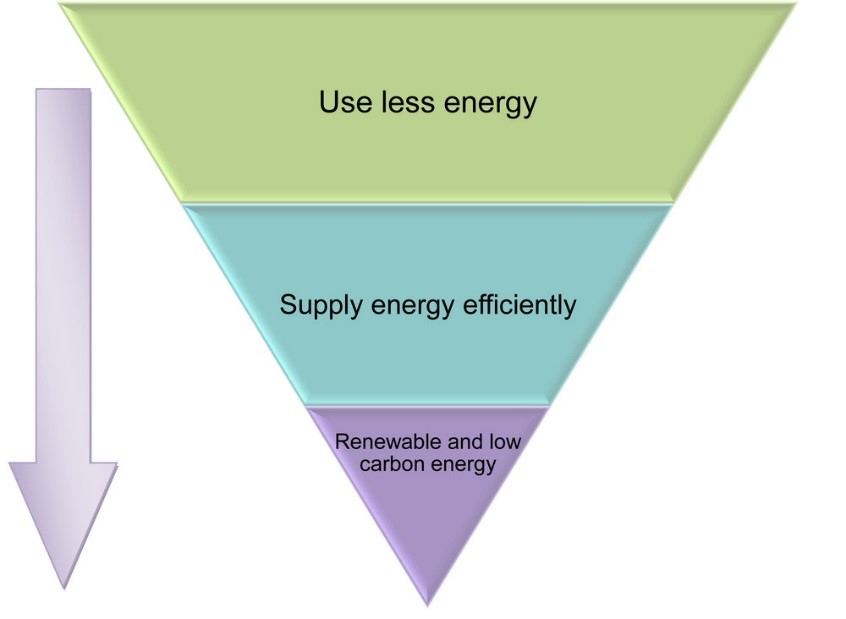When considering options to improve energy for your house, as well as your house type you also need to consider your occupancy behaviours. There may be quick win options which involve simple low key interventions or behaviour change.
The Energy Hierarchy
Energy hierarchy
We support the energy hierarchy approach. So reduce your energy demand first, become more efficient and finally look to generate or use renewable energy. We will need to do all three, but this is a good way to prioritise action.
Damp, condensation and ventilation
The illustration below gives you an idea of how much extra water you could be adding to the air in your home in a day.
| Cause | Amount of condensation |
|---|---|
| Drying clothes indoors | 9 pints |
| Cooking and the use of a kettle | 6 pints |
| Bottled gas heater | 4 pints (based on 8 hours use) |
| 2 people at home for 16 hours | 3 pints |
| A bath or shower | 2 pints |
| Washing dishes | 2 pints |
It is critical before considering retrofitting options for your home to understand damp, condensation and ventilation, so that you can prevent damp and condensation issues in your home.
Damp is moisture from the air or the ground that has been prevented from passing through a building and is trapped. It can include rising damp from the ground, condensation from the air or trapped inside the building fabric (interstitial).
In older houses damp problems occur when impermeable materials such as cement render, plasters and vinyl paints and wallpapers, are applied on top of breathable materials. The impermeable layers trap moisture and cause damp problems. In addition, rain penetration, rising damp and pipe leakage are other common causes of damp.
Materials do not insulate well when they are wet, as, it is the air within the material that has the insulating properties. A dry building will feel cosier and more comfortable. Even if a damp house and a dry house have the same internal temperature, the damp house will feel less comfortable and colder.
Condensation is actually the most common cause of damp within homes. It occurs when large quantities of water vapour from day to day activities are trapped inside. When warm moist air comes into contact with cooler air, on a surface with a lower temperature (for example, a window or an outside wall). This can prove ideal for the germination of black mould.
The key to solving condensation issues is ventilation. By improving the ventilation within a property you can often quickly reduce and eliminate damp and mould problems.
Suggested solutions to condensation and damp
To resolve damp and condensation issues you should:
- Identify if problems are associated with building defects or condensation
- Keep your property well ventilated - open windows on a daily basis
- Try to keep at least a small gap between walls and furniture against cold walls
- If drying clothes, it is always better to do it outside. If this is not possible, put them in an enclosed room with plenty of ventilation and keep the window open.
- When cooking, cover pots and pans
- Check to make sure necessary ventilation within your property are not blocked or closed, such as air bricks, vents or chimneys
- Try to keep heating levels within your property at a constant temperature
- Remove impermeable layers. For example, remove cement render and apply a breathable lime render instead of installing expensive technical damp proofing solutions

